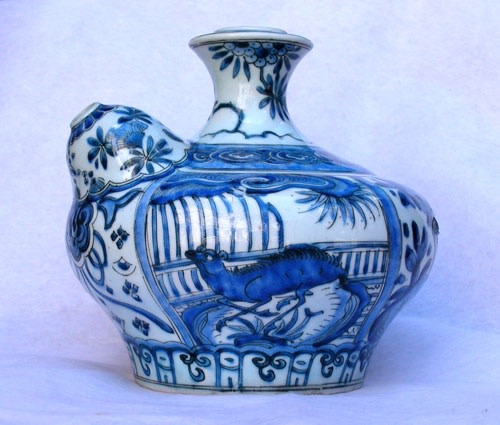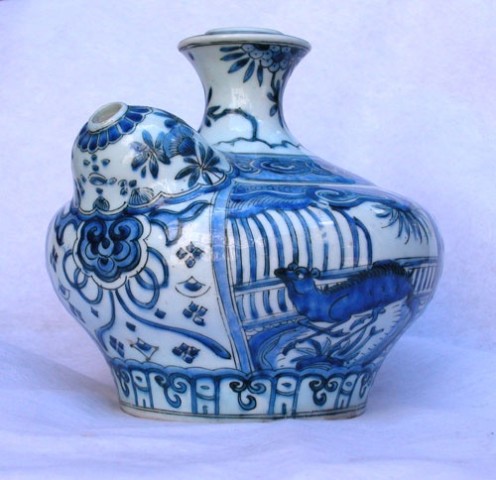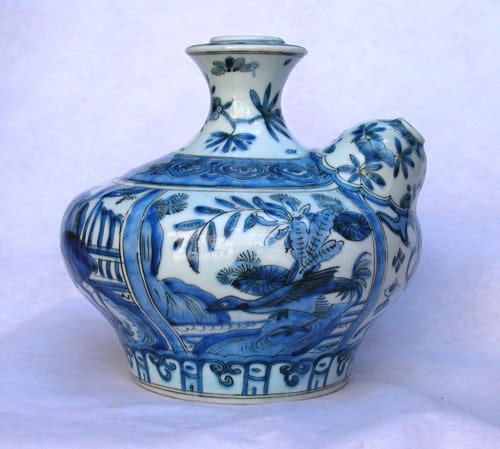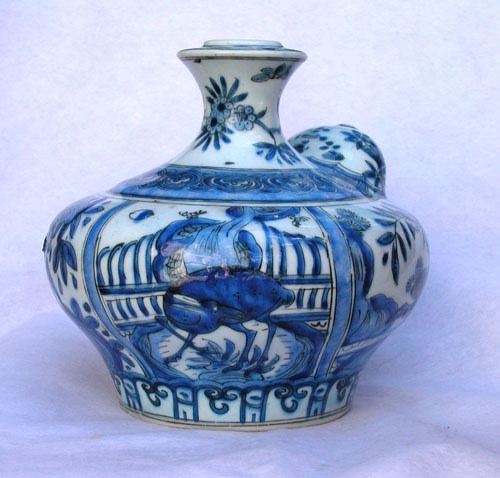Further images
Of squat globular form with mammary spout and flaring neck, painted in brilliant cobalt blue tinged with violet shades in the Chinese Kraak style, the body with five panels divided by thick blue bands and painted with;
1) a bird perched on a rock, long stems of flowers and grasses stretch over the bird, set in a watery landscape with further rockwork in the background
2) a deer standing in a landscape, the long-legged beast looking back, in the background a terrace
3) a bird, in profile, the beak and the eye prominent, standing on a rock, in front of large stylised flower-heads
4) an amusing fantastic beast, crouching , his pointed hooves on tufted grass, he stares ahead, as if ready to leap
5) the front panel with a tasselled trefoil design
All below a spout which has a band of petal work and flowering branches, the neck with further flowering branches above a band of trefoil work, the foot with a border of stylised fleur-de-lys separated by double bands, the base with a square pseudo Chinese mark
Literature
For an example of a Safavid spouted form like this one and painted in the Kraak style see, Arthur Lane, later Islamic Pottery published by Faber and Faber 1971, plate 79, page 97 This shape derived from the Chinese vessels, kendi, which were used for drinking or pouring, the Persians adapted and used for smoking and they became ghalian bases.
This kendi or ghalian base would have been made in Mashhad according to research done by Chardin,Lane and others.
With the closing of the Chinese market in 1659, Persian ceramic soared to new heights, to fulfil European needs. The appearance of false marks of Chinese workshops on the backs of some ceramics marked the taste that developed in Europe for far-eastern porcelain, satisfied in large part by Safavid production. This new destination led to wider use of Chinese and exotic iconography (elephants) and the introduction of new forms, sometimes astonishing (hookahs, octagonal plates, animal-shaped objects).








